![]()
![]()
![]()
Use LEFT and RIGHT arrow keys to navigate between flashcards;
Use UP and DOWN arrow keys to flip the card;
H to show hint;
A reads text to speech;
37 Cards in this Set
- Front
- Back
|
#3 scalpel handle |
- SA surgery - holds 10, 11, 12 and 15 blades |
|
|
#4 scalpel handle |
- LA surgery - holds 20, 21, 22 and 23 blades |
|
|
scissors |
- used for sharp cutting, blunt dissection - NEVER use on skin |
|
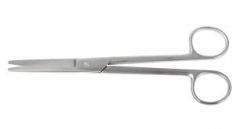
|
Mayo scissors - thick, sturdy blades for cutting fascia, dense tissue dissection |
|
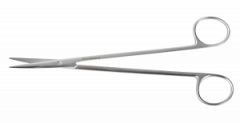
|
Metzembaum scissors - delicate scissors used for fine tissue dissection - long handles compared to blade length |
|
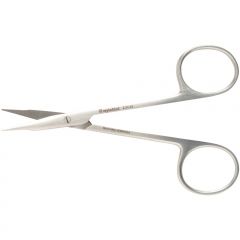
|
Tenotomy scissors - small scissors w/ very fine tips - used in general SA sx and ophthalmologic sx |
|
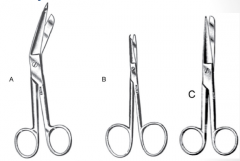
|
Utility scissors - sturdier scissors for cutting bandage material, suture, removing sutures |
|
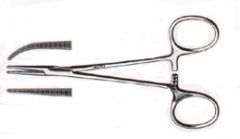
|
Halsted mosquito hemostats - used to grasp small vessels for ligation/cauterization |
|

|
Kelly hemostats - used to grasp small vessels for ligation/cauterization |
|
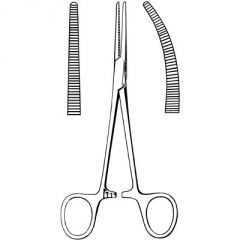
|
Crile hemostats - used to grasp small vessels for ligation/cauterization |
|
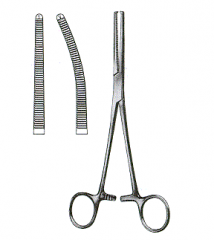
|
Rochester Oschner hemostats - used to cross clamp vessels or vascular pedicles - used to grasp masses or tissues during excision |
|
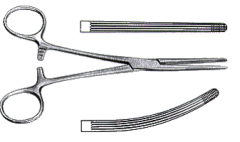
|
Rochester Carmalt hemostats - used for large pedicles in canine OVH |
|

|
Balfour retractors - self-retaining, abdominal retractor |
|

|
Finochietto retractors - self-retaining, rib retractor |
|

|
Gelpi retractors - self-retaining, tissue retractor - general surgical procedures |
|
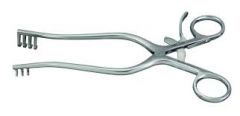
|
Weitlaner retractors - self-retaining, tissue retractor - general surgical procedures |
|

|
Senn retractor - handheld retractor - used for retraction in small, shallow fields |
|
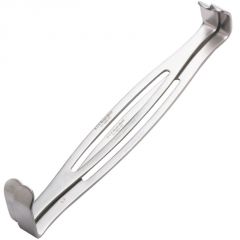
|
Army Navy retractor - handheld retractor - medium sized, for general use |
|
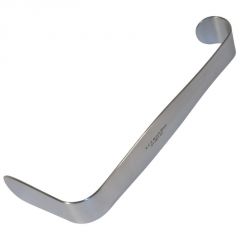
|
Malleable retractor - handheld retractor |
|

|
Poole suction tip - for large fluid volumes - central pinpoint suction tube within outer fenestrated tube - commonly used in peritoneal cavity |
|
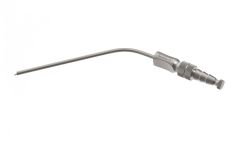
|
Frazier suction tip - more precise suctioning |
|

|
Yankauer suction tip - common tip for general sx |
|

|
Allis tissue forceps - used to grasp tissue, crushing - not to be used on tissue to remain in the body |
|
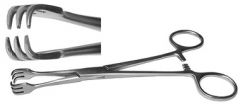
|
Layhey traction forceps - used to grasp and manipulate tissue |
|
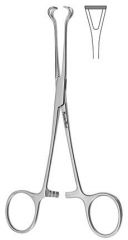
|
Babcock intestinal forceps - atraumatic tissue forceps, non-crushing - used to grasp bowel, hollow organs |
|
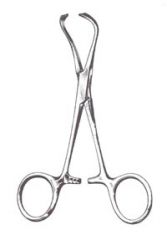
|
Non-penetrating towel clamps - used to attach top layer of drapes to the bottom layer of drapes |
|
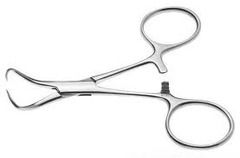
|
Penetrating towel clamps - used to attach bottom layer of drapes to the skin - can also be used to temporarily hold together large wounds before closing |
|
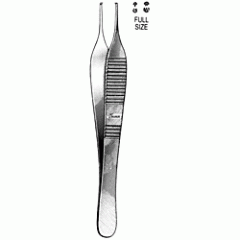
|
Adson's forcep - i.e. rat tooth - used for closure of SQ tissue or thin skin - too traumatic for use on viscera |
|

|
DeBakey thumb forceps - cardiovascular forcep - atraumatic - used for handling delicate tissue, particularly vessels |
|
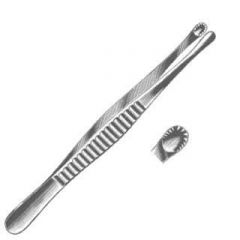
|
Russian tissue forceps - relatively non-traumatic - used for handling viscera, somatic tissues |
|
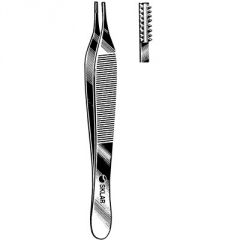
|
Brown Adsons tissue forceps - used for closure of SQ tissue and thin skin - can be used for hollow organs (less traumatic than Adson forceps) |
|
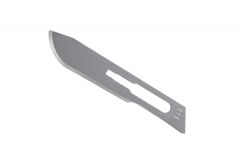
|
#10 blade - "standard" blade for general sx - linear incisions, dissection |
|
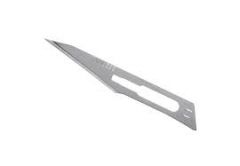
|
#11 blade - stab incisions |
|

|
#12 blade - suture removal - castration of piglets, lambs |
|

|
#15 blade - fine linear incisions, creating a wider stab incision |
|
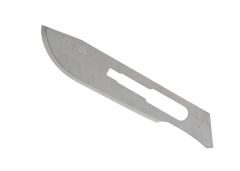
|
#22 blade - larger version of the #10 - linear skin incisions in thick-skinned large animals |
|
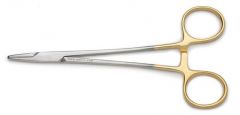
|
needle holders - used to hold needle during suture placement |

